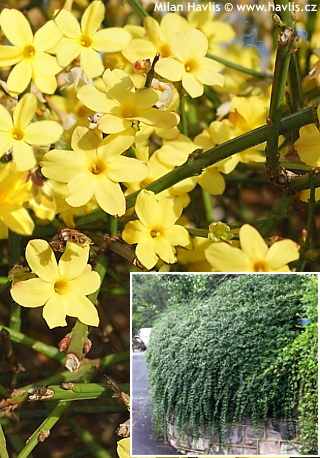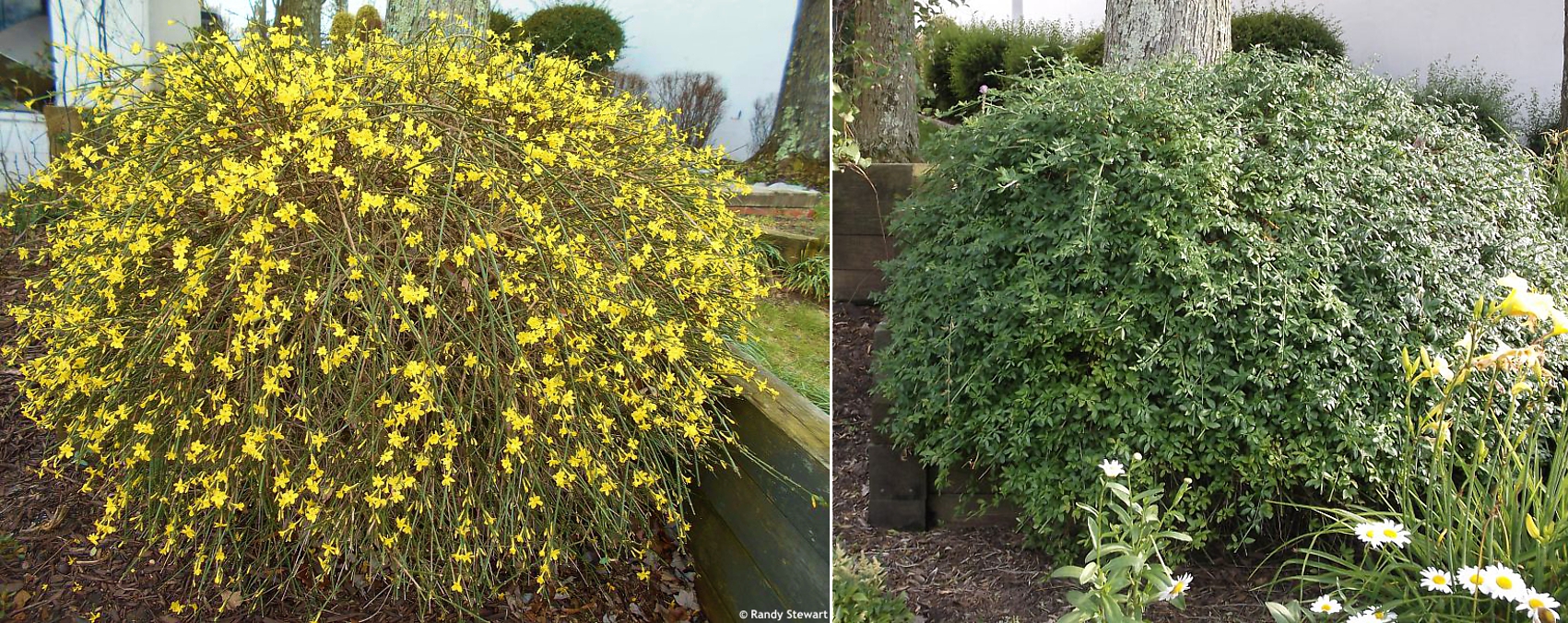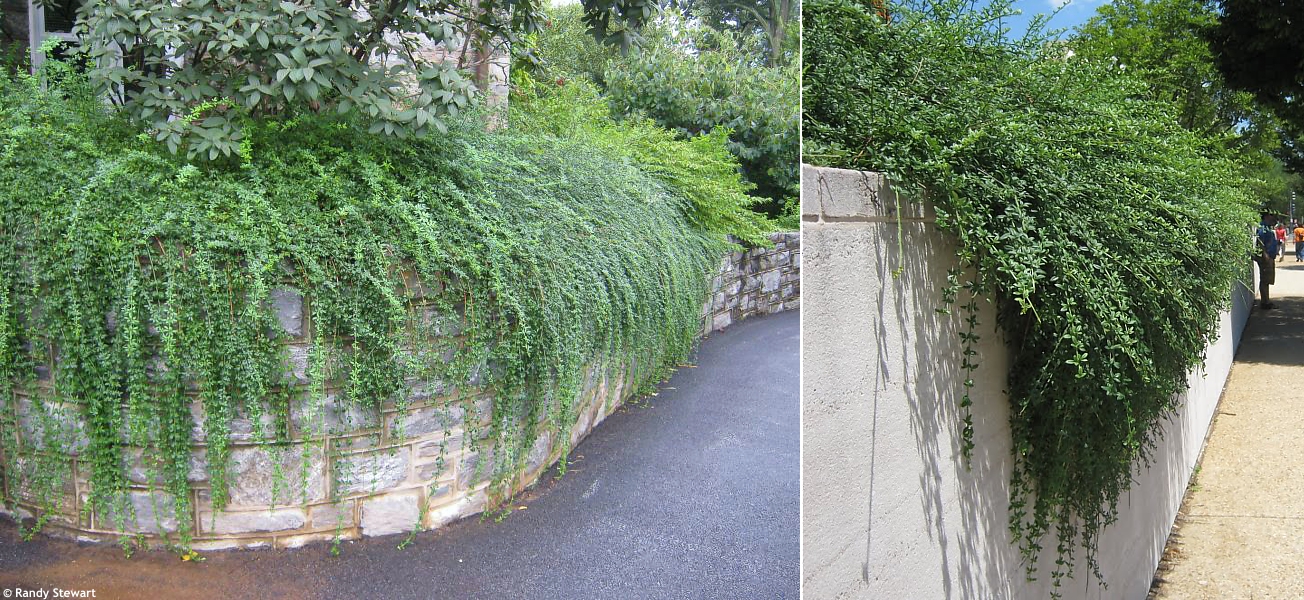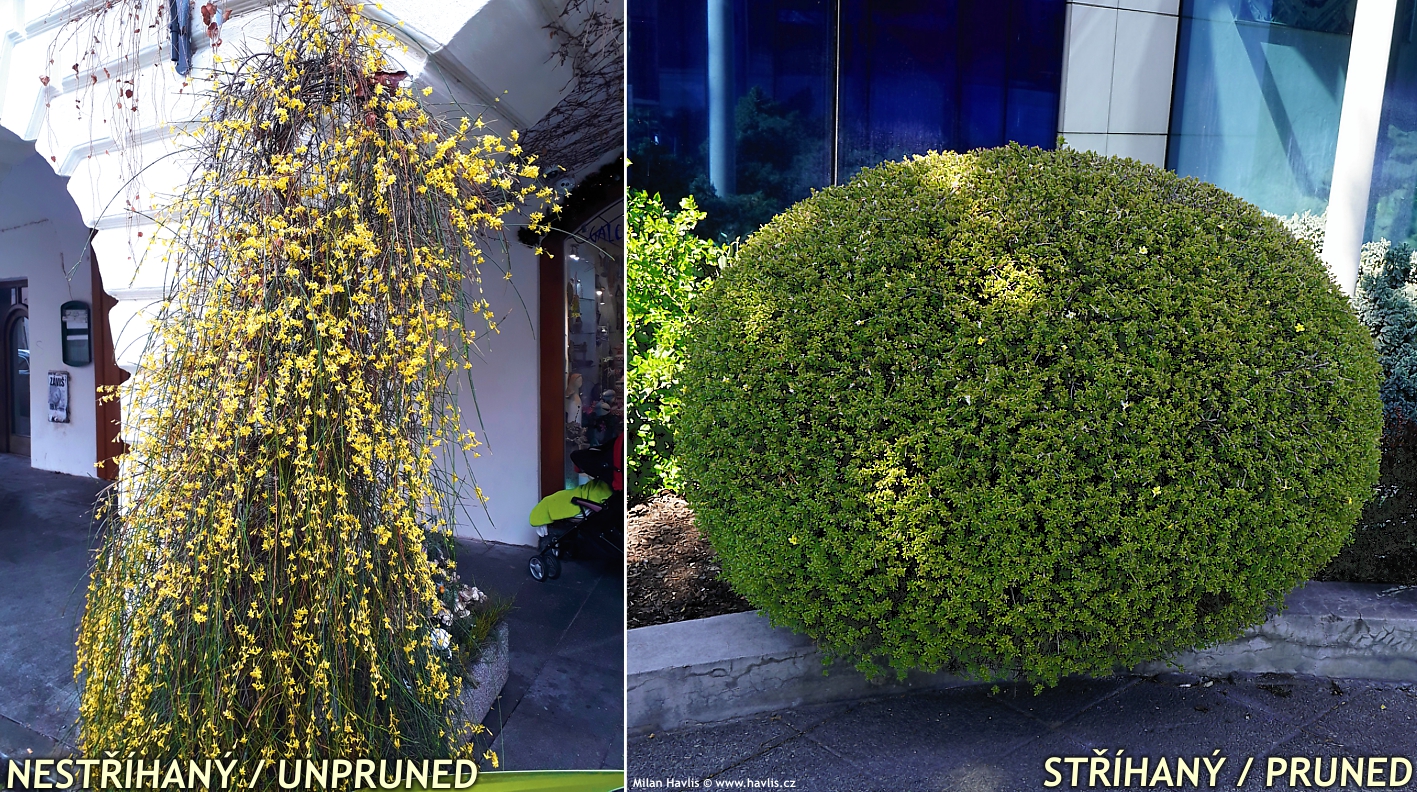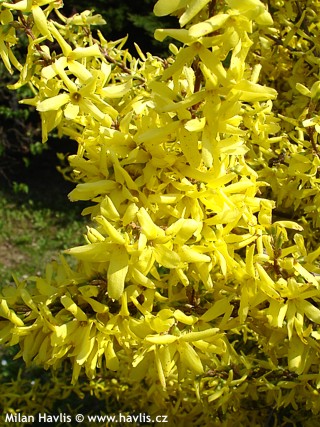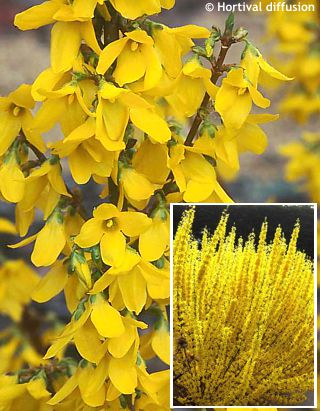Jasminum nudiflorum winter jasmine


Winter jasmine belongs to a large genus of more than 200 very different species occurring in Europe, Asia, and Africa. This is probably the only type of true jasmine that can be cultivated in our country (zone 5-6), we just have to show some leniency when it comes to a typical jasmine feature – the fragrance – because it lacks any scent whatsoever. But the beauty as well as the quantity of flowers will definitely make up for it.
From the first warm days of late winter appears a profusion of deep, scarlet red buds which burst to vivid yellow, 6-petalled flowers borne on bare wood, hence its Latin name nudiflorum. They keep popping up continuously for 4-8 weeks. The deciduous leaves resemble those of cinquefoil, they are trifoliate, narrowly oval, and shiny green. The twigs are square-shaped and green all year round, so even without leaves the plant looks fresh and not dormant.
It is a fast and low-growing deciduous shrub, often erroneously listed as a climber, because its long twigs are often tied to a vertical support, so that it soon covers walls and fences. On the other hand, its vigorous growth makes it quite a challenge if you want to keep the plant nice which is simple to achieve by regular and easy pruning. Immediately after flowering, cut the twigs back by 50-80% of length, and once in 5-7 years cut the plant almost to the ground for rejuvenation. Keep in mind that it can grow up to one meter per year, and adult, well-established plants even more. In return, it offers a handsome, well-branched cascades of new, strong, arching twigs with evenly distributed foliage and abundant flowering in winter. Without support, it grows mostly as a groundcover and takes a long time to exceed one meter in height thanks to randomly upright twigs.
Winter jasmine is so easy to grow – it prefers alkaline, well-drained soil, but it can cope with almost any but waterlogged soil. All it needs is a location in full sun. It does not require feeding and does not suffer from diseases or pests. Very hardy to min. -27 °C (USDA zone 5b), and in protected places it can handle a few degrees lower.
Last update: 06-03-2022
Goods are shipped all over Europe. For Russia and U.K. and for further details please read about SHIPPING OPTIONS HERE.
Are you interested in a serious discount for orders NOV-FEB? Check your options here.
THE PRICES INCLUDE VAT of 15%. For quick conversion you can use 1 CZK = approx. 0.04 EUR
- STANDARD QUALITY - Plants of this group are 1st class quality with number of branches and overall density adequate to their size and age, considering they were container grown.
- DE LUXE QUALITY - This label guarantees a luxurious quality of manually selected plants that, compared to their height and age, are exceptionally dense and beautiful.
- EXTRA - These plants are usually mature and bigger specimens with exceptional overall appearance.
- STANDARD (as described in the plant form) means a tree with a trunk of 190-210 cm and a crown at the top, unless specified differently. The commercial size for trees is their girth measured in the height of 1m from ground.
- HOBBY - These plants are of the same quality as our standard-quality plants but younger and therefore cheaper.
- SHRUB - a woody plant with branches growing bushy from the ground level.
- HALF-STANDARD or MINI-STANDARD - a small tree with shorter trunk, its size is usually specified.
- FEATHERED - These are trees with branches growing already from the base of the trunk and up along the stem.
- GRASSES and PERENNIALS - Sizes given usually read the diameter of the pot or the clump, as specified.












